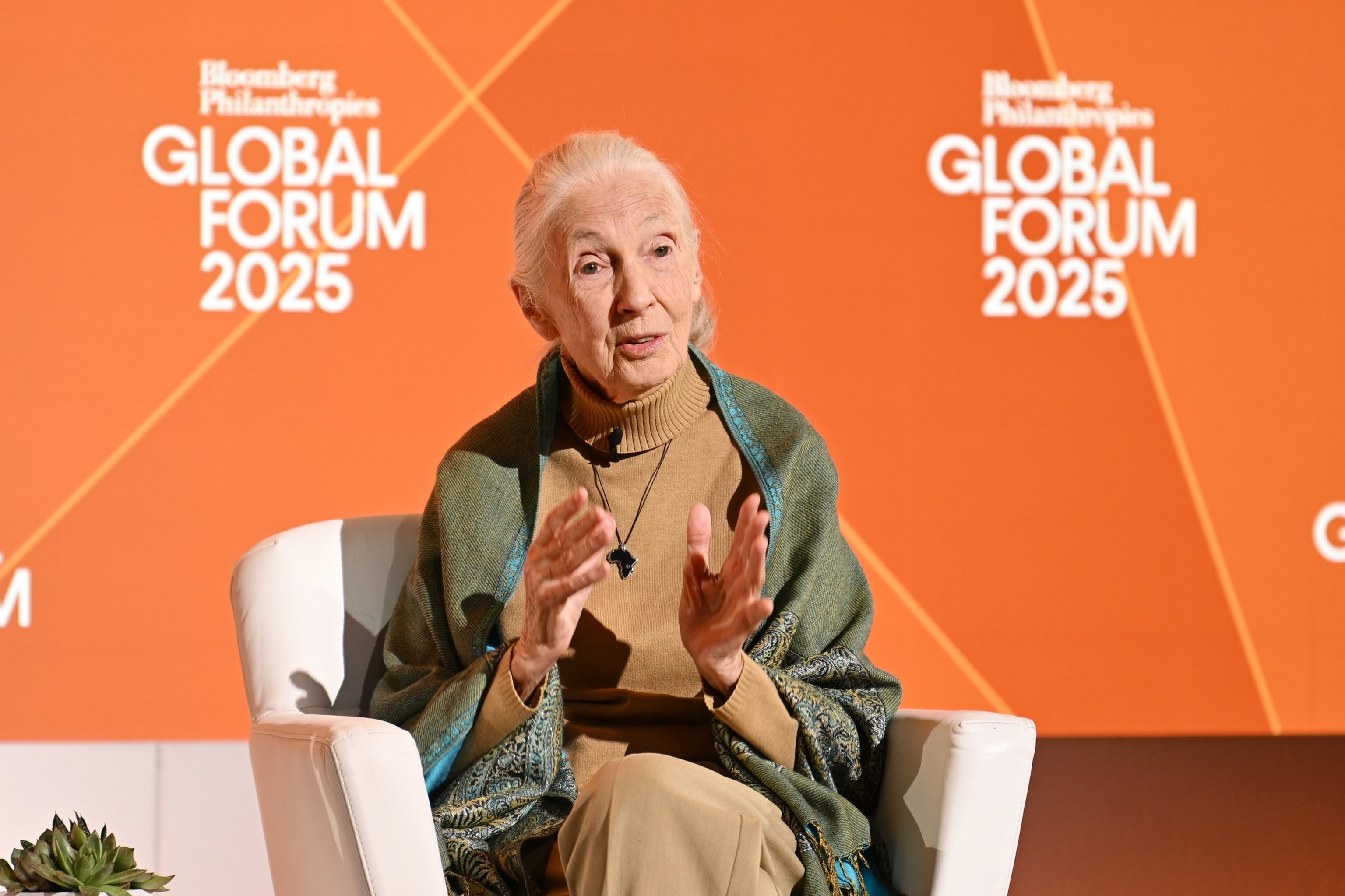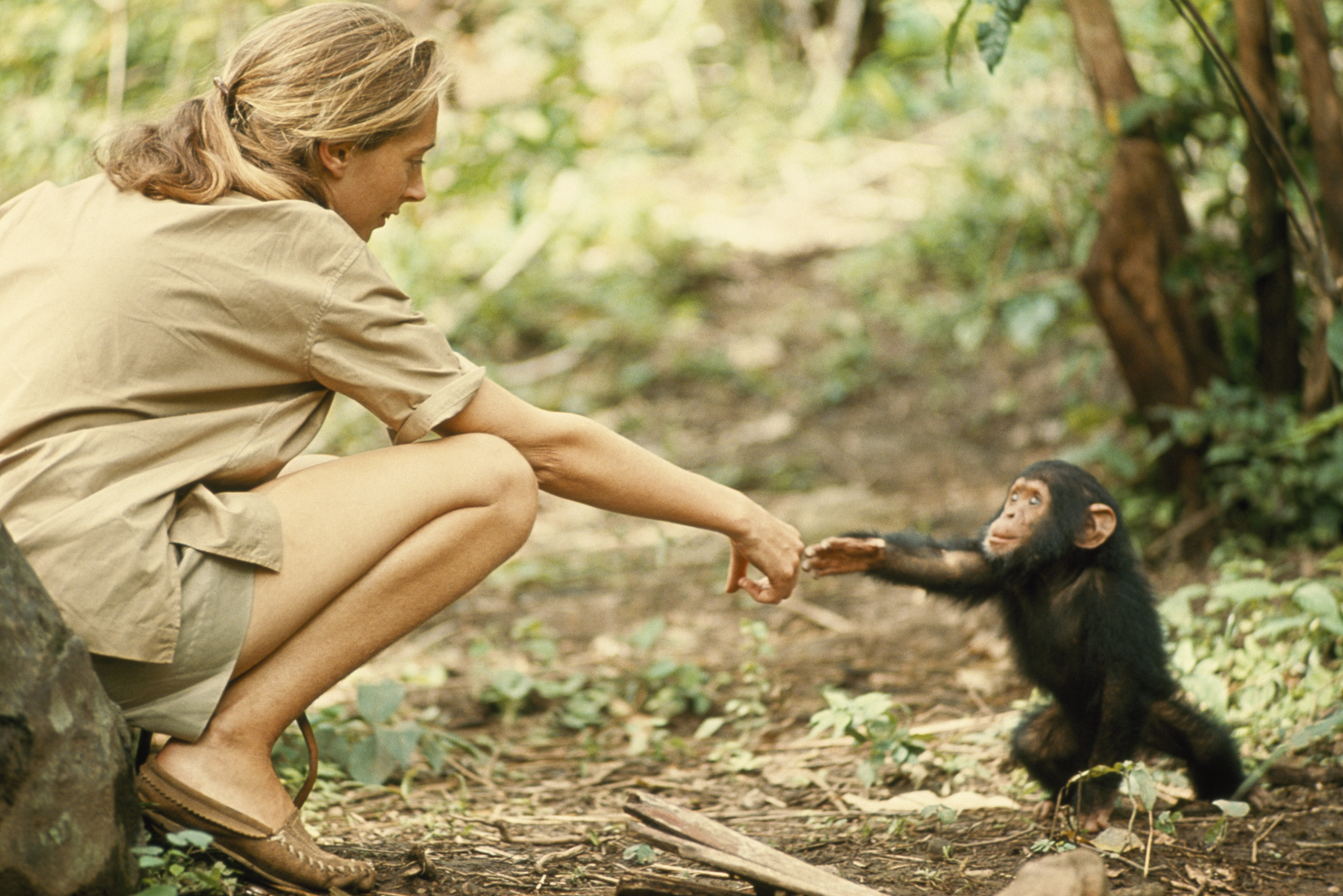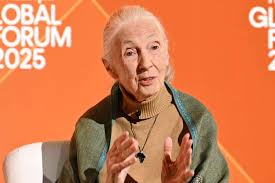How Did Jane Goodall Die? Natural End at 91
Imagine a life so intertwined with nature that even in her final moments, Jane Goodall was on a mission to inspire change. The world awoke on October 2, 2025, to the heartbreaking news: the pioneering primatologist had passed away the previous day at 91. As tributes flood in, we delve into how did Jane Goodall die, uncovering the peaceful circumstances and the enduring legacy that outlives her.
Table of Contents
- Early Life: Seeds of Curiosity
- Breakthroughs in Gombe
- Building a Global Legacy
- Personal Trials and Triumphs
- Honors and Lasting Words
- How Did Jane Goodall Die: The Facts
- Expert Reflections on Her Passing
- Q&A: Answering Key Questions
- Summary

What Jane Goodall said in her last video message before her death – ABC News
Early Life: Seeds of Curiosity
Jane Goodall entered the world on April 3, 1934, in London, England, amid the shadow of economic hardship. Her father, Mortimer, an engineer with a passion for racing, gifted her a stuffed chimpanzee named Jubilee at birth—a talisman that ignited her lifelong bond with primates. Following her parents’ divorce, she moved to Bournemouth with her mother, Vanne, whose unwavering support turned daydreams into destiny.
As a child, Goodall devoured tales of African explorers, spending hours in a chicken coop to witness a hen laying eggs—an act of quiet observation that taught her the power of patience. Without a university degree, she worked secretarial jobs to fund her 1957 voyage to Kenya at age 23. There, she met Louis Leakey, whose invitation to assist at Olduvai Gorge launched her into the wild unknown.
This unorthodox path freed her from academic constraints, allowing innovative approaches that redefined animal studies. Goodall’s early years remind us: Formal education isn’t the only key to genius—curiosity unlocks doors science often overlooks.
Childhood Sparks
- Jubilee’s Influence: The toy chimp symbolized empathy, carried through decades of research.
- Mother’s Encouragement: Vanne’s belief defied 1950s gender roles, modeling resilience.
- Solo Adventures: Backyard wildlife watches built the endurance for Gombe’s rigors.
These foundations weren’t mere anecdotes; they equipped Goodall to challenge human-centric views of intelligence.

education.nationalgeographic.org
Jane Goodall
Breakthroughs in Gombe
In July 1960, Jane Goodall pitched a tent in Tanzania’s Gombe Stream Chimpanzee Reserve, armed with notebooks and boundless zeal. Accompanied by her mother for cultural propriety, she endured isolation, malaria threats, and elusive subjects. Months passed before chimps tolerated her presence, but persistence paid off.
Her 1960 revelation: A chimp named David Greybeard fashioned twigs into termite probes, upending the belief that tool use defined humanity. Published in National Geographic, this sparked Leakey’s famous quip: Redefine tool, man, or chimp? Goodall’s naming of individuals—Flo, Fifi—revealed social intricacies: alliances, grief, even “wars,” mirroring human societies.
Earning a PhD from Cambridge in 1966 without an undergrad degree, her thesis on free-living chimps became primatology’s bible. Gombe’s lessons? Animals aren’t machines; they’re emotional beings deserving respect—a paradigm shift that influenced ethical animal research worldwide.
Revolutionary Insights
- Tool Innovation: Chimps’ adaptations showed evolutionary parallels to early humans.
- Family Dynamics: Maternal bonds and adolescent rebellions echoed our own.
- Ethical Observation: Non-invasive methods reduced stress, yielding truer data.
Goodall’s Gombe tenure teaches modern scientists: Empathy enhances evidence, turning observers into advocates.

Jane Goodall Chimp Personalities Studied in Gombe Stream National Park | National Geographic
Building a Global Legacy
By 1977, Jane Goodall founded the Jane Goodall Institute (JGI), evolving from research to action. TACARE, started in 1994, empowered Tanzanian women with eco-farming loans, slashing deforestation by half in villages—proving human prosperity bolsters wildlife.
Roots & Shoots, launched in 1991, now spans 120 countries, mobilizing youth for projects like anti-poaching and ocean cleanups. “Only if we understand, will we care. Only if we care, will we help,” she urged, inspiring 10,000+ groups. Her advocacy ended U.S. chimp lab testing in 2015 and partnered with NASA for satellite monitoring, exposing habitat loss that dwindled chimp numbers from millions to 350,000.
Goodall’s shift to activism reveals a vital truth: Conservation thrives when local voices lead, blending science with social justice for sustainable wins.
Impactful Initiatives
- Tchimpounga Sanctuary (1992): Homes for 60+ rescued chimps, combating bushmeat trade.
- UN Role (2002): As Messenger of Peace, amplified biodiversity pleas.
- Vegan Push (2021): “Eat Meat Less” campaign linked diet to planetary health.
Her blueprint? Grassroots empowerment over top-down edicts.

Gombe: 60 Years of Discovery – Jane Goodall Institute USA
Personal Trials and Triumphs
Jane Goodall‘s private world balanced wild frontiers with family hearths. Married to photographer Hugo van Lawick in 1964, she birthed son Grub in 1967 amid Gombe tents—juggling diapers and data logs. Their 1974 divorce led to a second union with Derek Bryceson, ended by his 1980 cancer death, a grief she channeled into fiercer resolve.
Unwed since, Goodall logged 300 travel days yearly into her 80s, adopting veganism for ethics. Her Christian faith intertwined with nature reverence, viewing all life as sacred threads. Health battles—typhoid, a 2020s hip surgery—slowed but never stopped her.
These chapters humanize a icon: Vulnerability isn’t weakness; it’s the forge of fortitude. Goodall modeled integrated living—work, love, loss weaving a tapestry of purpose.
Life Lessons Learned
- Parenting Parallels: Chimp matriarchs inspired her hands-on motherhood.
- Grief as Fuel: Losses deepened her anti-exploitation crusade.
- Aging Gracefully: At 90, she quipped, “I’m not old; I’m experienced.”
Her story whispers: Embrace trials; they cultivate compassion.

Renowned Chimpanzee Expert Jane Goodall Leaves a Lasting Legacy
Honors and Lasting Words
Jane Goodall‘s accolades form a constellation of recognition. The 1995 National Geographic Hubbard Medal preceded her 2003 DBE knighthood; 2021’s Templeton Prize bridged science and spirit. Culminating in January 2025’s Presidential Medal of Freedom, these affirmed her boundary-breaking influence.
Her 32 books, from In the Shadow of Man (1971) to The Book of Hope (2021), chronicled journeys and urgencies. Children’s tales like My Life with the Chimpanzees (1988) sparked vocations, while Harvest for Hope (2005) advocated mindful consumption.
Goodall’s voice echoed in TED Talks and UN addresses, her optimism a balm: “Hope is not a dream; it’s a plan.” A 2022 Mattel doll series empowered girls, proving her reach spans generations.
Timeless Contributions
- Ethical Reforms: Lobbied for wildlife protections, saving species from labs.
- Youth Ignition: Roots & Shoots fostered eco-leaders worldwide.
- Media Mastery: Documentaries like Jane (2017) humanized her saga.
Her honors teach: True legacy measures in changed minds, not shelves of trophies.

How Jane Goodall Spent Her Final Days and Her Thoughts About Retirement
How Did Jane Goodall Die: The Facts
On October 1, 2025, Jane Goodall slipped away peacefully in a Los Angeles hotel during her U.S. speaking tour, at 91, from natural causes—the gentle culmination of a vibrant life. The Jane Goodall Institute announced: “She passed doing what she loved—sharing hope.”
How did Jane Goodall die in detail? Natural causes at her age often signify multi-organ decline or cardiac events, sans acute illness. Recent videos showed her vigor, discussing retirement: “I’m not done yet.” Yet, insiders noted subtle fatigue from relentless travel.
No autopsy details emerged, respecting her privacy, but her final days brimmed with purpose—a Pasadena event loomed. This serene exit aligns with her ethos: Live fully, leave lightly.
Final Moments Timeline
- September 2025: Tour launch, youth empowerment talks.
- September 30: LA arrival, quiet reflections.
- October 1: Peaceful passing; tributes from DiCaprio, Guterres follow.
How did Jane Goodall die prompts reflection: Her vitality was spirit-deep, transcending flesh.

Plan or Register Conservation Events | Jane Goodall Canada
Expert Reflections on Her Passing
Dr. Anthony Collins, JGI Gombe veteran: “How did Jane Goodall die so gracefully? Natural causes, yes, but her empathy redefined ethology—chimps as kin, not specimens. Her void aches, yet her toolkit endures.”
Frans de Waal, primatologist: “Goodall blurred species lines; her death at 91 from natural decline underscores life’s continuum. Honor her by safeguarding Gombe’s ghosts.”
Jane Poyner, Roots & Shoots lead: “At 91, how did Jane Goodall die mid-mission? It fuels us—90% chimp loss reversed through her models like TACARE.”
Experts unite: Grieve, then act—her passing amplifies the call to kinship.
Q&A: Answering Key Questions
Q: How did Jane Goodall die exactly? A: Natural causes on October 1, 2025, in Los Angeles during a speaking tour.
Q: Was there any illness involved? A: Reports indicate age-related decline, no specified disease.
Q: What were her last words or actions? A: A video urged hope; she pondered semi-retirement but stayed committed.
Q: How will her work continue? A: JGI expands sanctuaries and youth programs in her name.
Q: Why does her death matter now? A: Amid biodiversity crises, it spotlights urgent conservation needs.
Summary
How did Jane Goodall die—peacefully, at 91, from natural causes—closes a chapter etched in chimp calls and global hopes. From Jubilee’s cradle gift to Gombe’s revelations, she wove empathy into science, birthing JGI and Roots & Shoots to combat habitat havoc. Her trials forged unbreakable spirit; honors crowned unyielding vision. As chimps dwindle, her lesson endures: Individuals ignite change. Mourn the woman, celebrate the wildfire she lit.
Explore further:

